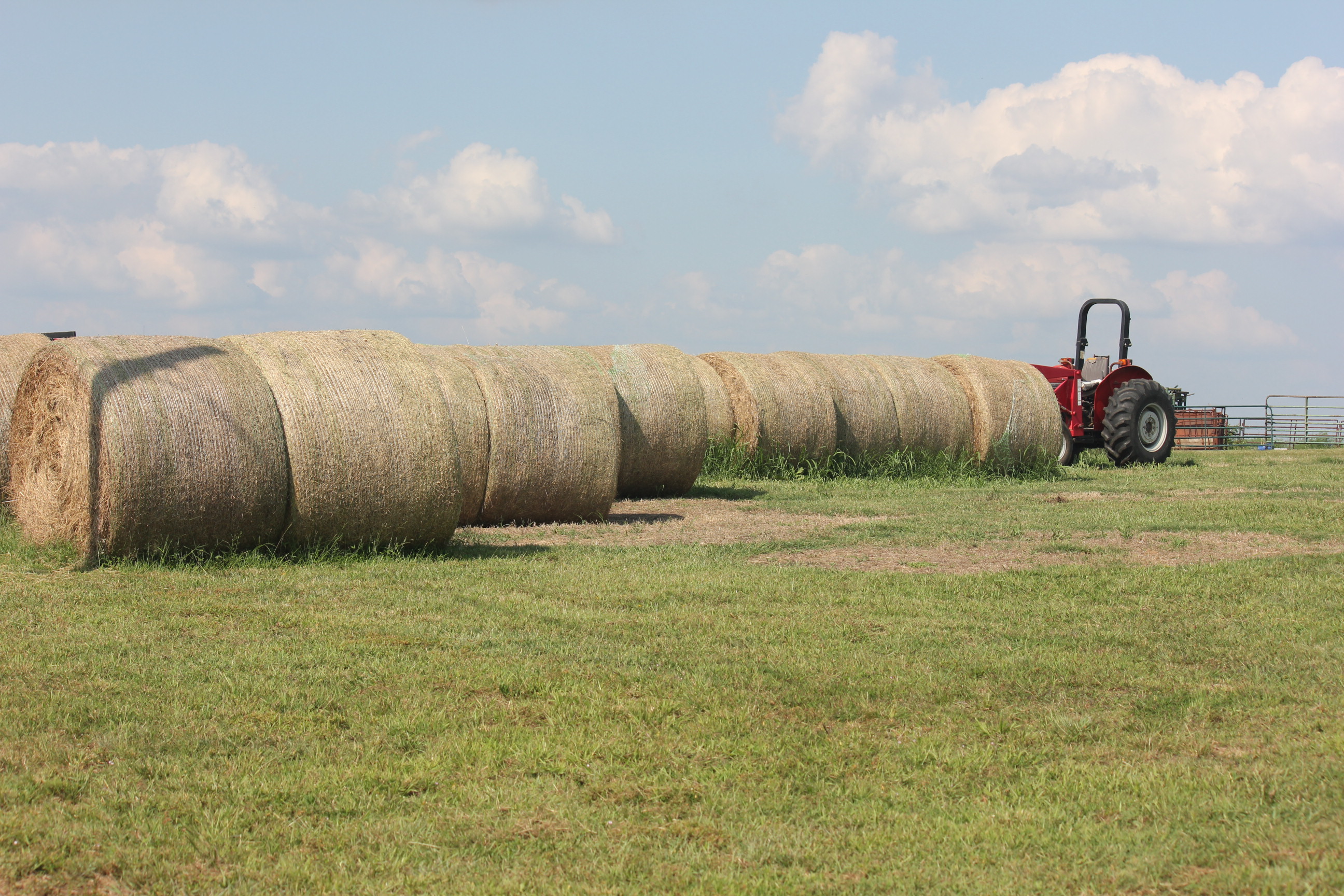A big part of getting Oklahoma natural beef from the pasture to your plate is the grass that they eat. This means that during the winter months, when grass is not as available, you need to make sure that you have enough hay on hand to feed your herd. Where does all of this extra hay come from? From hay season! During the summer months when grass tall and luscious, you cut the grass down to harvest it for hay. Doing this during the summer doesn’t take away from the grass that your herd is eating because it continues to grow back right away. If you lucky enough to have great pastures, some ranchers may get more than one hay cutting from their pastures during the summer months. That’s how fast your pastures can grow!
Once the grass is ready to be harvested to use for Oklahoma natural beef, you come in with a huge mower that cuts the grass down into rows. You have probably seen this if you drive through rural Oklahoma, Kansas, Texas, etc. Huge pastures that have neat rows all throughout. Once the grass has been cut it then needs to dry. Depending on rain, location, thickness of the grass, and heat the drying time can vary. If it’s in the middle of the hot dry summer, the grass could be completely dry after only a few hours of being cut. If you have had some rain, or the grass is really green and damp it could take a bit longer. You want it to be completely dry, with no trace of wet (green) grass but also make sure it doesn’t lose its nutrients. (https://myfarmlife.com/hay-forage/baling-tips-for-quality-hay/) Making sure the grass is dry ensures that you have dry fresh hay for your livestock. We don’t want any heavy wet moldy hay that could be hazardous to the health of your livestock.
Once the grass has been cut and dry it is know time to rake it into even bigger rows. Most rakes can gather three of the cut grass rows at once to combine them into one larger row. You rake the grass so that it has a chance to turn over and dry the underside as well as to make the rows big enough for the baler to come through and pick up the hay. A rake attaches onto the back of the tractor and has big metal wheels with spokes that turn as you roll it across the ground.
Now that the hay is raked, it is ready to be harvested by the baler. There are square balers and round balers. The style of the bale that you need depends on what kind of livestock you have. Ranchers with larger animals tend to prefer the larger round bales while smaller would probably use smaller square bales. These bales attach to the tractor and pick up the hay as you drive over the rows. It then spits out the bales into either round or squares wrapped with wire or netting and ready to go.
The haying process takes a lot of hard work and skill to operate machinery (http://blog.machinefinder.com/19160/six-things-remember-baling-hay) and produce the quality hay that you need for your animals. Its crucial that you bale hay the right way to produce the healthiest hay possible for your animals. The pricing for having hay baled can vary depending on the kind of season the industry is having, and area of the country you are in (https://www.hayandforage.com/article-1252-what’s-the-going-rate-for-baling-.html) Having enough hay to feed your herd during the winter months is crucial to producing best quality Oklahoma natural beef.

